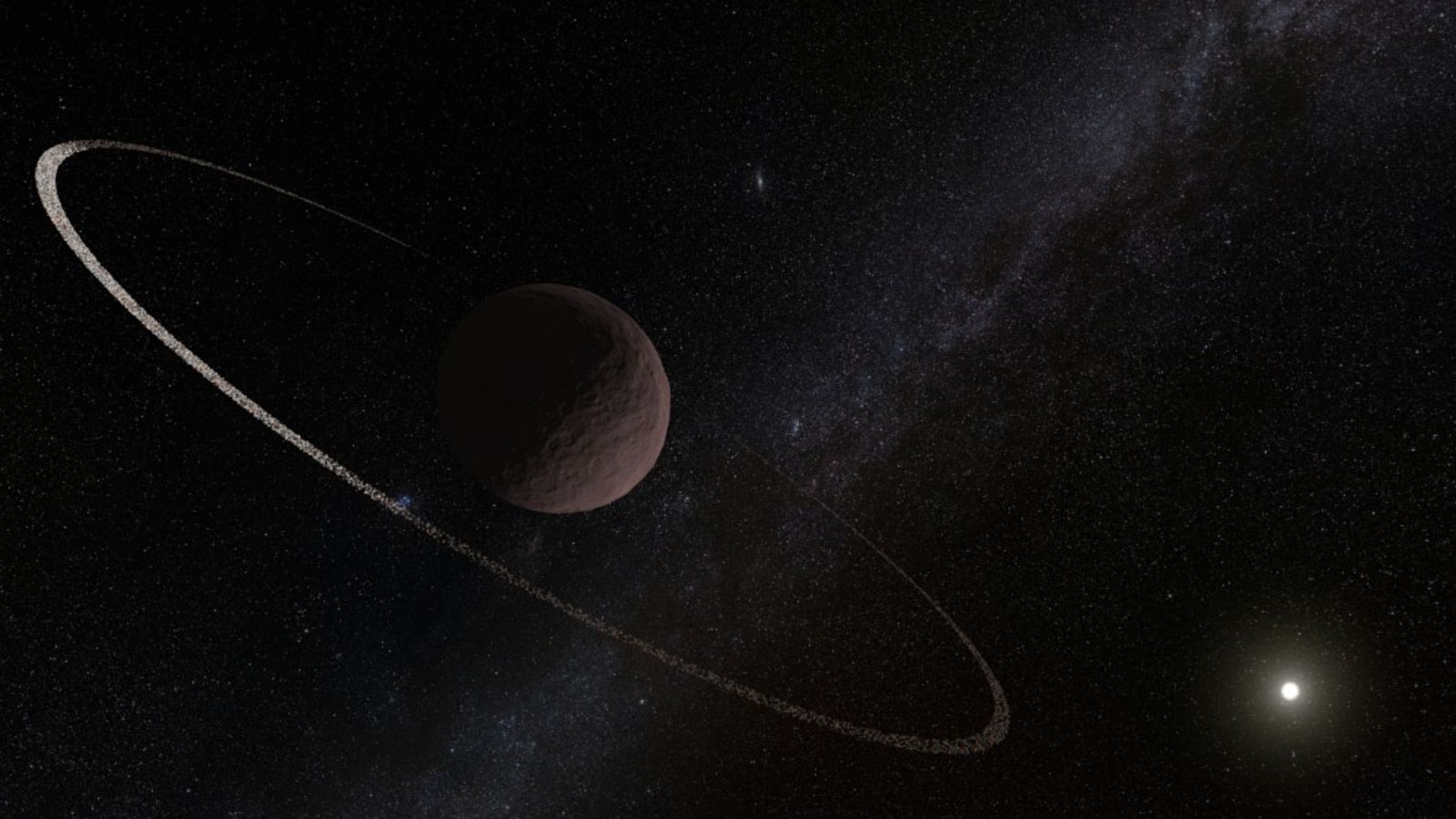A new planetary ring has been found on the edge of our solar system – and beyond the limit of where it was thought they could survive.
It loops around a dwarf world called Quaoar, which is approximately half the size of Pluto.
Astronomers say its discovery calls into question existing theories about how ring systems are formed.
Quaoar orbits the sun beyond Neptune, and its wispy hoop is at a distance of more than seven planetary radii – that’s twice as far out as ring systems were thought possible.
To compare, the main rings around Saturn lie within three planetary radii. It was thought they were able to survive because of their close orbit, as the forces created prevent them from breaking away and growing into moons.
But while Saturn’s rings – as well as those of the other giant planets Jupiter, Uranus, and Neptune – are well known, Quaoar’s are so small and faint that they cannot be seen directly in an image.
Researchers only saw them during an occultation, when the light from a background star was blocked by the small planet while it orbited the sun.
Occultations create a similar sensation to an eclipse – one last month involving Mars disappearing behind the moon was visible from parts of North, Central and South America.
Quaoar’s occultation lasted less than a minute, but it was surprisingly preceded and followed by two dips in light, indicating the presence of a ring system.
Read more:
‘Building blocks of life’ found in faraway icy clouds
The investigation into one of history’s worst space disasters
Discovery ‘challenges’ prior theories
Professor Vik Dhillon, of the University of Sheffield’s physics and astronomy department, said: “It was unexpected to discover this new ring system in our solar system.
“And it was doubly unexpected to find the rings so far out from Quaoar, challenging our previous notions of how such rings form.”
The discovery was made using HiPERCAM – an extremely sensitive high-speed camera developed at Sheffield and mounted on the world’s largest optical telescope, the Gran Telescopio Canarias, on La Palma.
Prof Dhillon, who co-authored a study on his team’s findings in the journal Nature, hopes it could provide more insight into how planetary rings form.
Sheffield was one of six UK universities involved in the groundbreaking work, which saw 59 academics led by Brazil’s Federal University of Rio de Janeiro.








